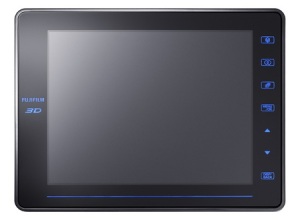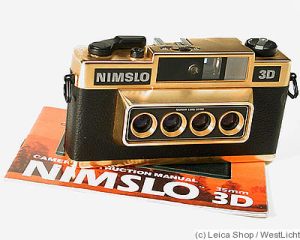Is practical and easily viewable three-dimensional photography here at last?
Amidst the sea of ever-advancing digital technology and evolving camera models, one product stands out above the rest: a 3D digital point-and-shoot camera, introducing a whole new way of seeing things.
A working prototype of Fujifilm’s FinePix 3D digital camera presented at the PMA Imaging Technology 2009 Show may well be finding its way into Australian homes in the near future. Alongside an 8.4-inch 3D Photo Frame and 4×6 prints, this futuristic camera has left those lucky enough to see the camera hands-on wondering “how did they do that?”
Using the latest advances in technology, the Finepix 3D synchronises two eye- distance apart lenses with matched zoom, exposure and focus to take two photos simultaneously with pinpoint accuracy but from slightly different angles. In other words, instead of just using one eye, this camera is now looking at things with two eyes, just as we do.
The concept of stereoscopic pictures has existed since Victorian times, but being able to view 3D photos without specialised glasses is what allows this new technology to really stand out. Fujifilm introduces the Finepix 3D into fast-paced market looking for something new and exciting.
Fujifilm’s W1 3D camera takes an ambitions leap, hoping to make a few waves.
The impressive 2.8-inch live-view LCD screen allows users to view the photos in 3D before taking the picture. This real time 3D effect is accomplished by the screen tricking the viewer’s eyes to see the two images as one. Both the accessory 3D digital photo frame and processed prints make use of this technique to produce stunning images. This groundbreaking technology means that viewers no longer need bulky glasses to view 3D images.
This new approach to 3D photography beckons a future tide of revolution for the media industry. The introduction of a revolutionary 3D digital photo frame paves the way for future digital 3D screens for TV and cinemas, leaving generous room for expansion. Eventually 3D billboards and posters may be seen jumping out at consumers, snatching the attention of viewers and delivering messages more quickly and memorably.
Enormous research is being done on electronic paper and other new printing techniques that will one day see magazines competing to attract readers’ attention through the use of 3D photos.
 Fujifilm’s digital 3D photo viewer
Fujifilm’s digital 3D photo viewer
Consumers themselves may one day be able to develop these photos at a local photo shop just as readily as a modern digital photo.
Should the Fujifilm Finepix 3D find steady footing in a market constantly on the move, other manufacturers will be attracted to join the fray and find whole new platforms beyond the existing patents on which to contend.
It is the incorporation of the digital photo frame that bolsters Fujifilm’s presentation of its latest venture into unknown territory. The concept of being able to quickly and easily share 3D photos without having to develop expensive prints is sure to appeal to those already intrigued by this experimental technology.
On a hands-on experience, it becomes apparent that printed 3D photos seem to lose dimensionality and depth when viewed at any angle other than head-on. Due to 3D viewing techniques, printed media seems to have a pixilated, low-resolution appearance. However, the technology, which has done much to impress and deserve attention, is sure to improve and develop further.
 Nimslo 3D cameras offered a glimpse into the future of photographer.
Nimslo 3D cameras offered a glimpse into the future of photographer.
As revolutionary as 3D photography may seem, Fujifilm is not quite stepping into uncharted territory. In the 1980s, the Nimslo 3D Camera broke ground by taking 3D photos on 35mm film. In the end, the inconvenience of price and months of waiting for the film to be processed eventually lead to the demise of this experimental camera, though few dedicated enthusiasts remain. Fujifilm picks up where the Nimslo 3D left off, and brings a novel idea back to the table in proper, digital fashion.
Fujifilm has already displayed operational 3D cameras in the past, and although the impact of previous presentations has been minimal, the Finepix 3D, with its more attractive body design and extended applications, looks to make bigger waves
Although no prices have yet been announced, the camera and prints are expected to be very expensive, certainly throwing a wrench into the 3D gears of excitement. As all technology trends go, while the introductory 3D camera, prints, and digital frame might be a bit out of range for casual consumers, given time, the technology may settle in, becoming more affordable and thus more commonplace.
Further advances in technology will bring 3D Digital Real Image System just a bit closer to consumers. With live-view LCD function, movie recording, digital photo-frame and prints, 3D photography is developing into something more than a fascinating gimmick.
Connectivity between 3D camers and 3D TVs will be on demonstration at the Digital Life Expo in Melbourne, Australia this June. The question now stands, will 3D photography catch on, and if so, just how far will it go?
Jerrel Dulay





